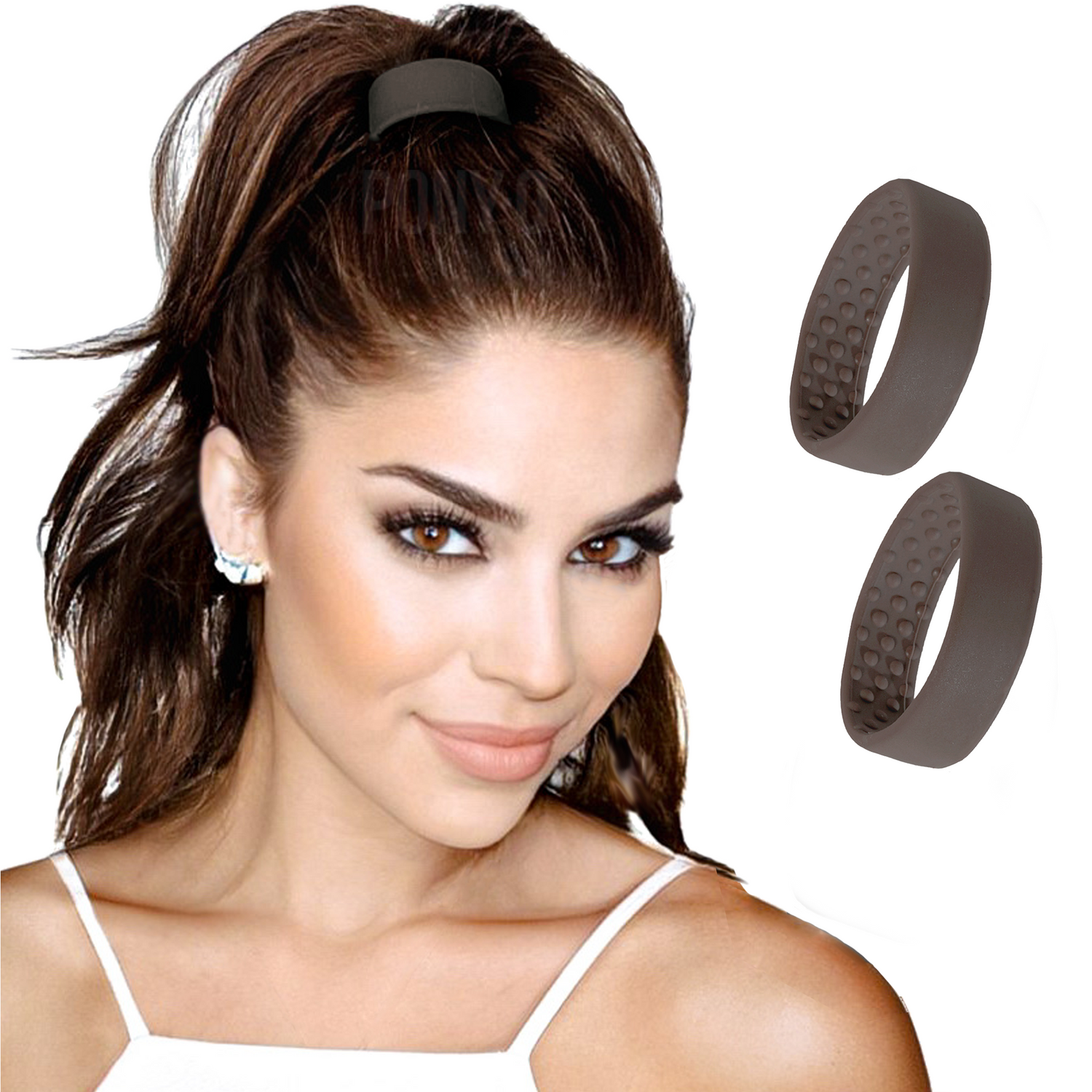Regular, elastic hair ties kind of suck. But if you take a look at who made them (ahem, men in the 16th century), it makes sense why. They weren’t made for women who live in modern times — women who work hard, run errands, exercise, juggle ten different tasks at once including chauffeuring kids to dance and soccer practice...you know, basically do it all. Elastics were made to do one thing. They weren’t made for changing hair styles or different hair types.
PONY-O hair ties is a women-owned and operated small business. All of our products are created and patented by women, for women. So in honor of women everywhere, we wanted to take a look at how far women (and the ponytail) have come. We’re so grateful for the incredible community of women that surrounds us and we’re excited for what’s to come!
First, You Have to Look At The History of the Ponytail

While it’s hard to pin down the exact year when the first iteration of the hair tie was invented, we do have some idea of the beginning of the ponytail.
According to BBC, pictures from Ancient Greece show women wearing ponytails. However, it was the pre-17th century men of the Manchu people in Northeast China (who established the Qing Dynasty) that seem to have brought the ponytail mainstream. They grew their hair long on top of their heads, and slightly shaved the front. The long hair was often braided and called a “queue,” which is the French word for “tail.” Later, the Manchu people forced the Han Chinese men and women, who traditionally wore their hair in buns, to take on the style as well. In fact, not wearing a ponytail became a punishable offense.
Moving into the 18th century, European soldiers adopted the style and it was considered uber masculine. Most soldiers were actually required to wear the style. However, these ponytails still weren’t tied up with a hair tie like you know today. Men used ribbons, fabric or leather and a pin to pull hair back.
It was in 1820, however, that Thomas Hancock obtained the first patent for the use of elastic in things like shoes and fasteners. Then, in 1845, British businessman, Stephen Perry, secured the patent for the rubber band.
So, When Were Hair Ties Invented?

When those first hair ties were invented, women weren’t part of the work force and couldn’t vote, let alone file for a patent. That privilege was afforded only to men. Hook Brown Company finally patented an “elastic loop fastener” that covered a circular elastic with blended fabric — a.k.a. the modern hair tie — in 1958.
In the early 20th century, the ponytail was considered an informal style and mostly for little girls. It wasn’t until the 1950s and 1960s that it became a popular hairstyle, and that’s thanks to Barbie, movies like Grease and the show, I Dream of Jeannie.
And although it didn’t really take off until the 1980s when it was patented by a woman, it was yet another man that invented the hair scrunchie in 1963.
Men May Have Invented the Ponytail and Hair Ties, But The Woman Behind PONY-O Perfected It
In the 1980s and 1990s, women reclaimed the ponytail. Madonna wore a platinum clip-on pony during her Blonde Ambition Tour and Janet Jackson’s box braid ponytail became iconic.
However, the precursor to the PONY-O bendable hair tie was also invented around then, and ponytails have never been the same.
Founder and CEO Nicol invented and patented her first hair accessory for herself in 1987, because regular elastics were extremely damaging to her curly hair. Nicol launched her hair accessories to consumers, and in doing so, began to revolutionize the hair industry.
The PONY-O works with every hair type — thick, thin, straight, curly, textured — and it won’t damage your hair. It doesn’t pull on the hair follicle, which makes it comfortable to wear all day. And, because of its unique design, it really will keep its hold all day.
Use the PONY-O ponytail volume tool to create a high pony, low pony or wear your hair half up, half down. If you prefer to wear your hair in a bun, Nicol also invented BUN BARZ for creating hair buns that look like a professional did your hair. Maybe even better.
Nicol is one of the top female patent holders in the United States, and has been awarded worldwide patents for the PONY-O and BUN BARZ. She, and her team of incredible women, are always innovating and developing products to add to the popular PONY-O brand of ponytail accessories.
Today, the PONY-O and BUN BARZ have been used by hundreds of thousands of women worldwide, and that number is growing fast. It’s a hair accessory made by women, for women. Women understand the need for high-quality, comfortable hair accessories. And who’s more qualified than a woman to give them what they need?
To learn more about PONY-O Hair Accessories, read more of our blogs:
QUIZ: Which PONY-O product is for you?
#ponyohair #hairstyles #easyhairstyles #halfuphairstyles #healthyhair #hairaccessories #hairties #hairinspo #womenownedbusinesses


















